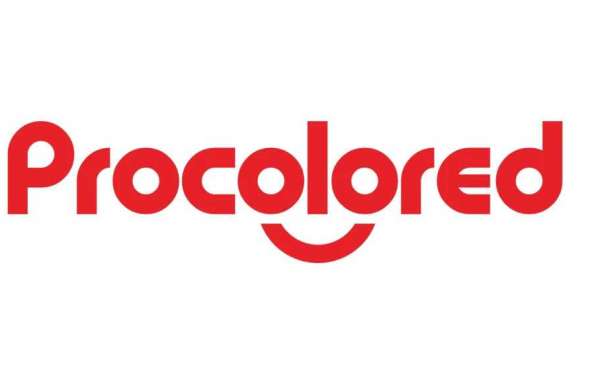Direct-to-Film (DTF) printing is a relatively new technology in the custom apparel industry, known for its versatility and ability to produce vibrant prints on a wide variety of fabrics. As with any printing method, it's important to consider its environmental impact compared to other common techniques, such as screen printing, Direct-to-Garment (DTG) printing, and heat transfer vinyl (HTV). This article explores the environmental impact of DTF printing and how it compares to other popular printing methods.
1. Material Usage and Waste
DTF Printing: DTF printing requires the use of specialized transfer films, adhesive powders, and inks. While DTF allows for precise and efficient use of ink, there is still some waste involved in the form of excess film and powder. However, the ability to print on demand and avoid excess inventory reduces overall material waste.
Screen Printing: Screen printing typically involves a significant amount of waste, especially in the setup phase. Each color in the design requires a separate screen, and the ink used for each screen often leads to waste. Additionally, the cleaning process for screens can result in chemical waste that must be disposed of properly.
Direct-to-Garment (DTG) Printing: DTG printing uses water-based inks, which are generally less harmful to the environment than plastisol inks used in screen printing. DTG also allows for printing on demand, minimizing waste. However, DTG machines may require regular maintenance and cleaning, leading to some waste of ink and cleaning fluids.
Heat Transfer Vinyl (HTV): HTV involves cutting designs from vinyl sheets, which can lead to significant waste, especially with intricate designs. The leftover vinyl is typically not reusable, contributing to material waste.
Comparison: In terms of material waste, DTF printing strikes a balance between efficiency and environmental impact. While there is some waste from films and powders, it is generally less than that generated by screen printing and HTV. DTG printing is comparable to DTF in terms of material efficiency, with both methods offering low-waste solutions for small runs and custom orders.
2. Energy Consumption
DTF Printing: DTF printing requires energy for the printing process, as well as for curing the ink and adhesive powder. The curing process typically involves the use of a heat press or curing oven, which consumes additional energy. However, dtf printer are often designed to be energy-efficient, especially when used for small to medium print runs.
Screen Printing: Screen printing is a labor-intensive process that also requires significant energy, especially for large print runs. The drying process for the inks often involves the use of large drying ovens or conveyer dryers, which consume a considerable amount of energy.
Direct-to-Garment (DTG) Printing: DTG printers are typically energy-efficient and are well-suited for small to medium print runs. However, like DTF, DTG also requires a curing process for the printed garments, which can add to the overall energy consumption.
Heat Transfer Vinyl (HTV): HTV requires energy for cutting the vinyl and for applying the design using a heat press. The energy consumption for HTV is generally lower than that of screen printing, but it can be comparable to DTF and DTG, especially when multiple designs are applied in a single session.
Comparison: In terms of energy consumption, DTF printing is comparable to DTG and HTV, with all three methods requiring a curing process that consumes energy. Screen printing, especially for large print runs, is generally more energy-intensive than DTF and the other methods.
3. Chemical Use and Emissions
DTF Printing: The inks used in DTF printing are often water-based and less harmful to the environment than traditional plastisol inks used in screen printing. However, the adhesive powders used in DTF can contain chemicals that may have environmental impacts if not disposed of properly. The curing process also emits some fumes, although these are typically less harmful than those generated in screen printing.
Screen Printing: Screen printing involves the use of various chemicals, including plastisol inks, solvents, and cleaning agents. These chemicals can be harmful to the environment if not handled and disposed of correctly. The process also generates significant volatile organic compounds (VOCs), which contribute to air pollution.
Direct-to-Garment (DTG) Printing: DTG printing typically uses water-based inks, which are generally more environmentally friendly than plastisol inks. However, the cleaning and maintenance of DTG printers can involve the use of chemicals that need to be managed properly to avoid environmental harm.
Heat Transfer Vinyl (HTV): HTV involves the use of vinyl, which is a plastic material that can have environmental impacts. The production of vinyl generates pollutants, and the disposal of HTV waste can contribute to plastic pollution if not handled properly.
Comparison: DTF printing has a lower chemical and emission impact compared to screen printing, which is known for its heavy use of chemicals and VOC emissions. DTG printing is similar to DTF in its use of water-based inks, making both methods more environmentally friendly. HTV, while involving fewer chemicals, contributes to plastic waste, which is a growing environmental concern.
4. Longevity and Durability
DTF Printing: DTF prints are known for their durability and ability to withstand multiple washes without significant fading or cracking. This longevity reduces the need for frequent reprints, which in turn reduces material and energy usage over time.
Screen Printing: Screen prints are also highly durable, especially when using plastisol inks. However, the environmental impact of screen printing is more significant due to the chemical and energy use involved.
Direct-to-Garment (DTG) Printing: DTG prints are generally durable, but they may not last as long as DTF or screen prints, especially when printed on dark fabrics. The need for reprints or touch-ups can increase the overall environmental impact of DTG printing.
Heat Transfer Vinyl (HTV): HTV designs are durable, but they can peel or crack over time, especially with frequent washing. This can lead to the need for reapplication or reprinting, which increases material and energy usage.
Comparison: DTF printing offers a good balance of durability and environmental impact, with long-lasting prints that reduce the need for frequent reprints. While screen printing offers similar durability, its overall environmental impact is higher. DTG and HTV are comparable in terms of durability, but both may require more frequent reprints, increasing their environmental footprint.
Conclusion
When comparing the environmental impact of DTF printing to other methods, DTF stands out as a relatively eco-friendly option, especially when considering its material efficiency, energy consumption, and reduced chemical use. While it may not be entirely free of environmental concerns, DTF printing offers a more sustainable solution compared to traditional screen printing and HTV, and it is comparable to DTG in terms of its overall environmental impact.
For businesses and individuals looking to minimize their environmental footprint, DTF printing presents a viable option that balances quality, durability, and sustainability. By adopting best practices in ink management, waste reduction, and energy use, DTF printing can be an environmentally responsible choice in the custom printing industry.








